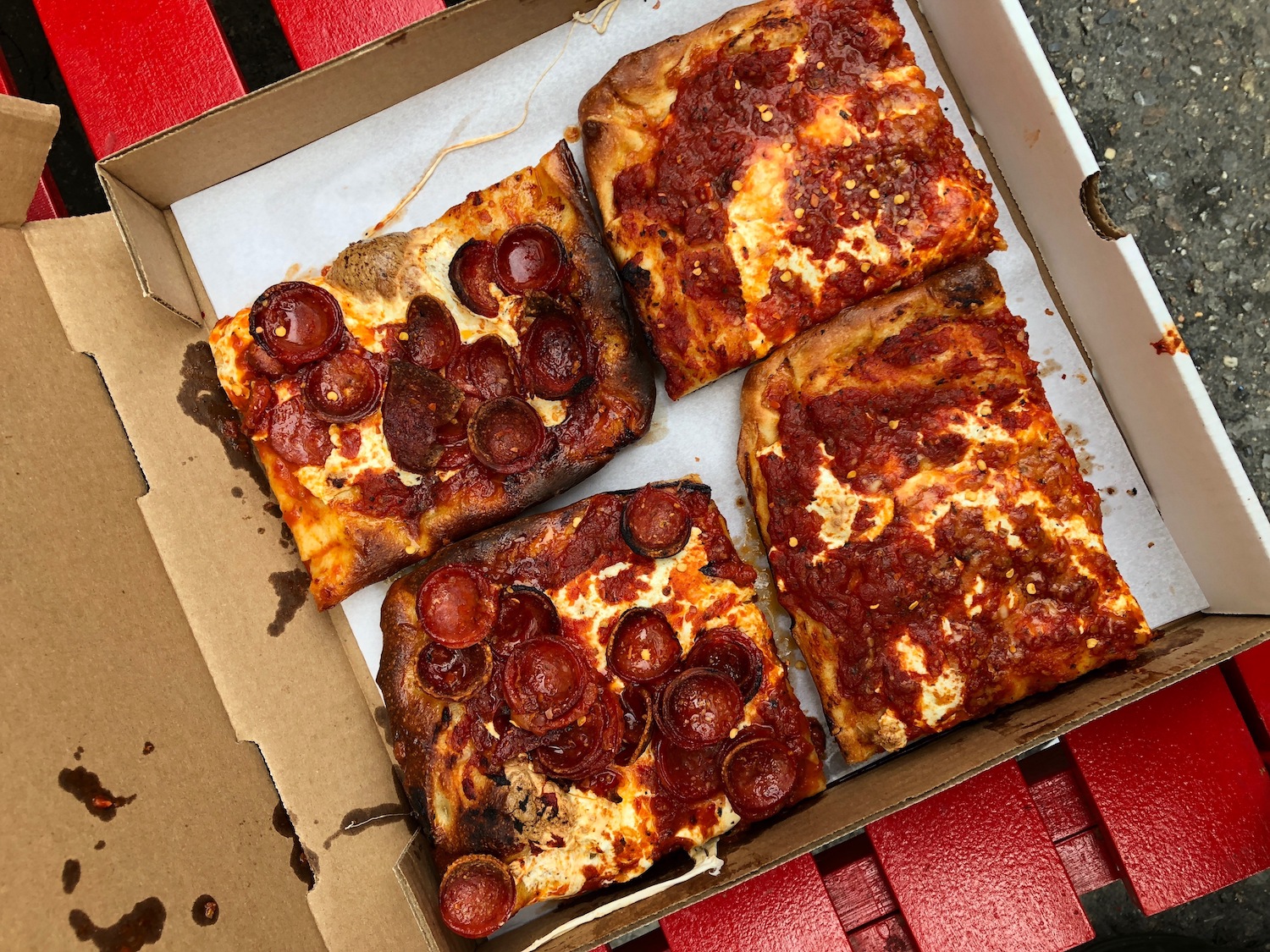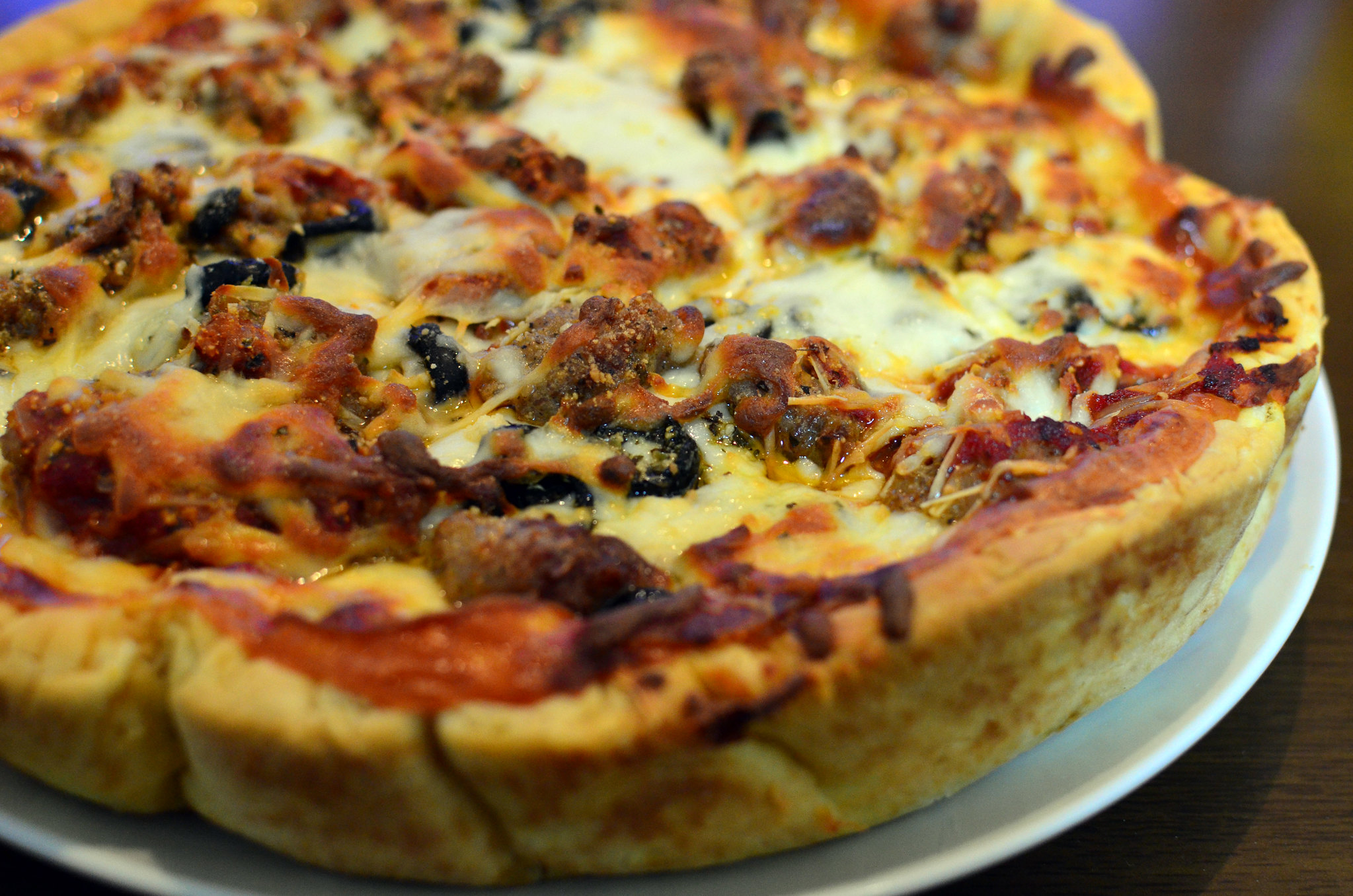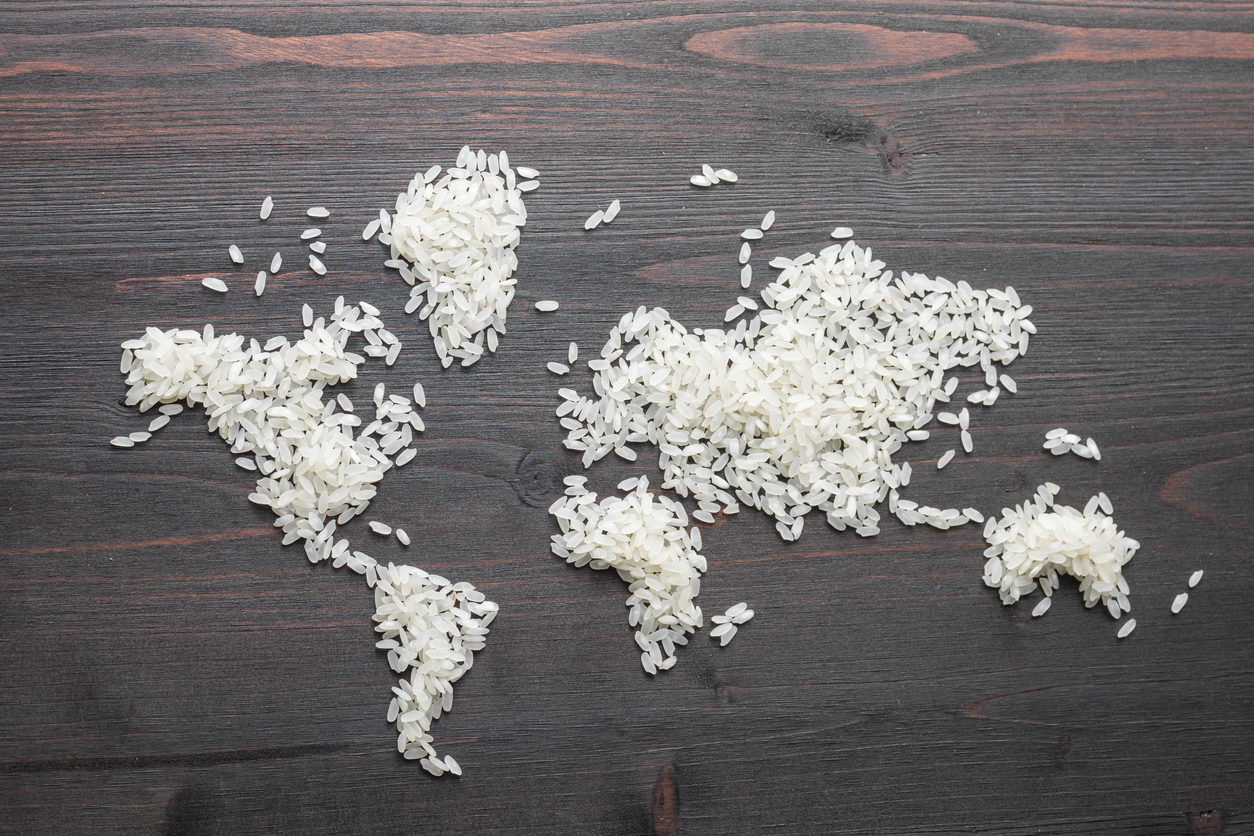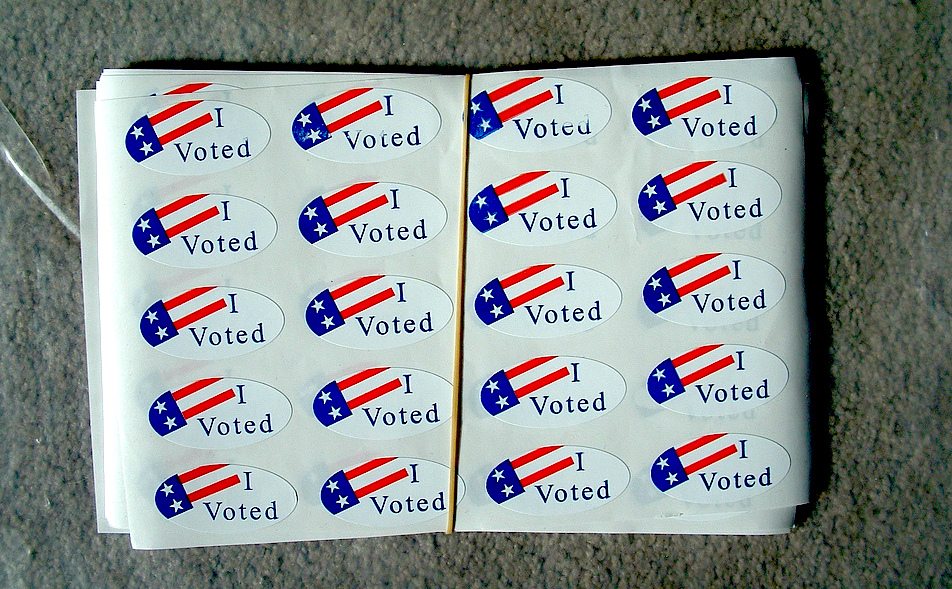
Becca Kahn Bloch
A longtime pizzaiolo at Prince Street Pizza, one of New York City’s truly great pizzerias, has opened his own joint, slinging Sicilian slices made from an original recipe that he claims he created. Now, his former business partner is threatening legal action, saying that recipe belongs to him, and the chef isn’t allowed to take it elsewhere.
Since it opened in 2012, Prince Street Pizza has developed a fanatical following. Regularly, long lines spill from the tiny, seat-free parlor onto the street. Inside, the walls are festooned with autographed photos of actors from The Sopranos and Entourage and former New York Knicks. Prince Street serves traditional triangle slices, and square, Grandma-style cuts, but it’s best known for the “Spicy Spring Pie,” a Silician pizza made with tangy, garlicky tomato sauce and a pieces of chili-laced salami that curl into tiny cups of spicy oil. The ingredients are piled onto a soft, spongy crust that, if you’re lucky, is crispy and charred from the oven. Folks, it’s good.
When asked by the press, the people who run the shop say that, with the exception of a pesto slice, Prince Street’s recipes are all their own. Included on its roster are a few from co-owner Frank Morano’s Calabrian father and grandfather; some from his mother, who hails from Naples; and many from his business partner Frank Badali, a longtime pizza maker from Staten Island, according to The Daily News.
Eater New York reports that Sugarman says his restaurant has made “noticeable changes and improvements” to the recipe to “distinguish our pepperoni square from Prince Street’s.” But Morano, the Prince Street owner, isn’t having it. He’s seeking an injunction against Badali, claiming that his former business partner, who broke a confidentiality agreement by reproducing the recipe in a new location, shouldn’t be allowed to sell his pizza.
Morano may not have a leg to stand on.
Pizza feuds are a cultural phenomenon. In 2013, Rick Micucci, a grocer in Portland, Maine, fired his bakery manager, Stephen Lanzalotta, who was nationally known for making fluffy, half moon-shaped Luna bread and Sicilian slab pizzas. Locals revolted and Micucci said the grocery would continue to serve the doughy delights. But Lanzalotta claimed Micucci couldn’t do that because when he was hired, he didn’t sign any documents transferring “rights of ownership of my pre-existing recipes to the company,” and even had an oral agreement to “retain intellectual property rights to any recipe I brought from the outside.”
View this post on Instagram
And there’s practically a new pizza fight every day in New York City. When Patsy Grimaldi, a culinary descendent of the city’s first pizzaiolo, tried to open a new joint next to a place he used to own under the Brooklyn Bridge but sold off decades earlier, he was sued for “unfair competition.” (The case was thrown out.) More colorfully, in 2011, the owners of L&B Spumoni Gardens, a pizzeria in Brooklyn’s Bensonhurst neighborhood, alleged that Eugene Lombardo, owner of a Staten Island pizzeria called The Square, had stolen their pizza sauce recipe. The feud escalated into assault and extortion. “This is no secret recipe. There’s no patents on pizza,” Lombardo said at the time.
Lombardo was right: There are no patents on pizza. That’s because the U.S. Patent and Trademark Office defines recipes as little more than lists or combinations of ingredients, which are not eligible for protection, no matter how inventive.
First, patents apply to new products and, more regularly, processes. And the clock ticks fast on novelty. If you’ve been selling something for a while, like a certain spicy pepperoni pizza, you’ve probably blown your chance at a patent. By that logic, claiming your pizza is “famous”—as pizzerias in New York City are wont to do—means it’s even less likely to be protected and patented.
There are some exceptions. Recipes that solve a problem in a new way, or adapt to new technology, can be good candidates for patents. (Think of refrigerated, pre-made cookie dough, microwaveable food, or even toaster cookies.) And so are the processes behind some foods, like the famous “shot from guns” toasting method for Quaker Oats’ puffed rice and wheat.
In reality, there’s a downside to patents—especially for smaller-scale inventors. Applicants have to disclose the details of their inventions when they apply for a patent, which is a public filing. That makes their concepts freely available to big companies with big production operations. And when a patent expires after 20 years, anybody is free to use it. That’s why many food producers make a point of not patenting some of their most valuable intellectual property. Instead, they keep information permanently under wraps as a trade secret.
The smartest companies, meanwhile, require that everyone sign a non-disclosure or confidentiality agreement to protect things like cherished family recipes from being duplicated elsewhere. And even though you can’t patent a recipe, you can always get in trouble for breaching a contract. If Badali had signed an NDA, and agreed not to share the recipe elsewhere, he could be in trouble. That’s amore.










